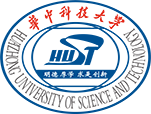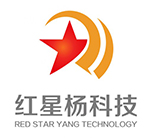Plenary Speakers
DATE: 7/18/2019
Providing 3D for Super-Resolution Microscopy
and Single-Particle Tracking in Cells with Single MoleculesWilliam E. Moerner
Stanford University, USA
Stanford University, USA
ABSTRACT: Super-resolution microscopy has opened up a new frontier in which biological structures and behavior can be observed in fixed and live cells with resolutions down to 20-40 nm and below. Examples range from protein superstructures in bacteria to bands in axons to details of the shapes of amyloid fibrils and much more. Current methods development research addresses ways to extract more information from each single molecule such as 3D position and orientation, and to assure not only precision, but also accuracy. Still, it is worth noting that in spite of all the interest in super-resolution microscopy of extended structures, even in the “conventional” single-molecule tracking regime where the motions of individual biomolecules are recorded in cellular environments, much can be learned. Combining super-resolution imaging of a static structure with 3D tracking of other biomolecules provides a powerful view of cellular dynamics.
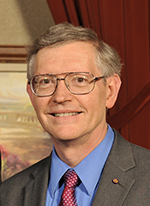 BIOGRAPHY: W. E. (William Esco) Moerner, the Harry S. Mosher Professor of Chemistry and Professor by courtesy of Applied Physics, has conducted research in physical chemistry, biophysics, and the optical properties of single molecules, and is actively involved in the development of 2D and 3D super-resolution imaging for cell biology. Imaging studies include protein superstructures in bacteria, structure of proteins in cells, studies of chromatin organization, and dynamics of regulatory proteins in the primary cilium. Using powerful microscopes optimized for tracking of single objects in cells, the motions of proteins, DNA, and RNA are being measured in three dimensions in real time to understand processing and binding interactions. A related research area concerns precise analysis of photodynamics of single trapped biomolecules in solution, with applications to photosynthesis, protein-protein interactions, and transport measurements.
BIOGRAPHY: W. E. (William Esco) Moerner, the Harry S. Mosher Professor of Chemistry and Professor by courtesy of Applied Physics, has conducted research in physical chemistry, biophysics, and the optical properties of single molecules, and is actively involved in the development of 2D and 3D super-resolution imaging for cell biology. Imaging studies include protein superstructures in bacteria, structure of proteins in cells, studies of chromatin organization, and dynamics of regulatory proteins in the primary cilium. Using powerful microscopes optimized for tracking of single objects in cells, the motions of proteins, DNA, and RNA are being measured in three dimensions in real time to understand processing and binding interactions. A related research area concerns precise analysis of photodynamics of single trapped biomolecules in solution, with applications to photosynthesis, protein-protein interactions, and transport measurements.Professor Moerner attended Washington University as a Langsdorf Engineering Fellow, graduating in 1975 with degrees in Physics and Electrical Engineering (both B.S. with top honors), and Mathematics (A.B. summa cum laude). His doctoral research in physics at Cornell University (M.S. 1978, Ph.D. 1982) employed tunable infrared lasers to explore infrared vibrational modes of impurities in crystals. In 1982, he moved from New York to San Jose, California to join the IBM Research Division developing spectral holeburning for frequency domain optical storage and photorefractivity for dynamic hologram formation. After 13 years at IBM, Dr. Moerner accepted a position as Distinguished Professor of Physical Chemistry at UC San Diego, where he broadened his research to include biological systems and biophysics. Recruited to the Stanford Chemistry Department faculty in 1997, he served as Chair of the department from 2011 to 2014.
Professor Moerner’s scientific contributions were recognized with the 2014 Nobel Prize in Chemistry "for the development of super-resolved fluorescence microscopy." One method to surpass the optical diffraction limit (PALM/STORM) uses single-molecule imaging combined with a control mechanism to keep the concentration of emitting molecules at a very low level, followed by sequential localization to reconstruct the underlying structure. The fundamentals of this idea came from early work in the Moerner lab: optical detection and imaging of single molecules (1989) combined with blinking and switching at low temperature, as well as the discovery of optical control of single copies of green fluorescent protein at room temperature (1997). Among many other honors and awards, Professor Moerner was elected fellow of the American Physical Society, Optical Society of America, American Association for the Advancement of Science, American Academy of Arts and Sciences; and member of the National Academy of Sciences.
.............................................
Piezotronics and Piezo-phototronics of the Third Generation Semiconductors
Zhonglin Wang
Beijing Institute of Nanoenergy and Nanosystems, CAS, China
Georgia Institute of Technology, USA
Beijing Institute of Nanoenergy and Nanosystems, CAS, China
Georgia Institute of Technology, USA
ABSTRACT: Piezoelectricity, a phenomenon known for centuries, is an effect that is about the production of electrical potential in a substance as the pressure on it changes. For wurtzite structures such as ZnO, GaN, InN and ZnS, due to the polarization of ions in a crystal that has non-central symmetry, a piezoelectric potential (piezopotential) is created in the crystal by applying a stress. The effect of piezopotential to the transport behavior of charge carriers is significant due to their multiple functionalities of piezoelectricity, semiconductor and photon excitation. By utilizing the advantages offered by these properties, a few new fields have been created. Electronics fabricated by using inner-crystal piezopotential as a “gate” voltage to tune/control the charge transport behavior is named piezotronics, with applications in strain/force/pressure triggered/controlled electronic devices, sensors and logic units. This effect was also extended to 2D materials such as MoS2. The objective of this talk is to introduce the fundamentals of piezotronics and their application for robotics and human-machine interfacing.
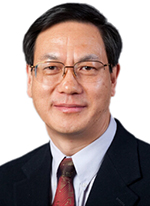 BIOGRAPHY: Dr. Zhong Lin (ZL) Wang is the Hightower Chair in Materials Science and Engineering and Regents' Professor at Georgia Tech,and Founding Director and Chief Scientist at Beijing Institute of Nanoenergy and Nanosystems. Dr. Wang pioneered the nanogenerators from fundamental principle to technological applications. His research on self-powered nanosystems has inspired the worldwide effort in academia and industry for studying energy for micro-nano-systems. He coined and pioneered the fields of piezotronics and piezo-phototronics for the third generation semiconductors. Wang is ranked No. 1 in Google Scholar public profiles in Nanotechnology & Nanoscience both in total citations and h-index impacts: http://www.webometrics.info/en/node/198. His google scholar citation is over 200,000 with an h-index of over 225.
BIOGRAPHY: Dr. Zhong Lin (ZL) Wang is the Hightower Chair in Materials Science and Engineering and Regents' Professor at Georgia Tech,and Founding Director and Chief Scientist at Beijing Institute of Nanoenergy and Nanosystems. Dr. Wang pioneered the nanogenerators from fundamental principle to technological applications. His research on self-powered nanosystems has inspired the worldwide effort in academia and industry for studying energy for micro-nano-systems. He coined and pioneered the fields of piezotronics and piezo-phototronics for the third generation semiconductors. Wang is ranked No. 1 in Google Scholar public profiles in Nanotechnology & Nanoscience both in total citations and h-index impacts: http://www.webometrics.info/en/node/198. His google scholar citation is over 200,000 with an h-index of over 225.Dr. Wang has received the Albert Einstein World Award of Science (2019); Diels-Planck lecture award (2019); ENI award in Energy Frontiers (2018); Global Nanoenergy Prize, The NANOSMAT Society, UK (2017); Distinguished Research Award, Pan Wen Yuan foundation (2017); Distinguished Scientist Award from (US) Southeastern Universities Research Association (2016); Thomas Router Citation Laureate in Physics (2015); World Technology Award (Materials) (2014); Distinguished Professor Award (Highest faculty honor at Georgia Tech) (2014); NANOSMAT prize (United Kingdom) (2014); The James C. McGroddy Prize in New Materials from American Physical Society (2014); MRS Medal from Materials Research Soci. (2011). Dr. Wang was elected as a foreign member of the Chinese Academy of Sciences in 2009, member of European Academy of Sciences in 2002, academician of Academia of Sinica 2018, Foreign member of Korean Academy of Science and Technology 2019, International fellow of Canadian Academy of Engineering 2019; fellow of American Physical Society in 2005, fellow of AAAS in 2006, fellow of Materials Research Society in 2008, fellow of Microscopy Society of America in 2010, fellow of the World Innovation Foundation in 2002, fellow of Royal Society of Chemistry, and fellow of World Technology Network 2014. Dr. Wang is the founding editor and chief editor of an international journal Nano Energy, which now has an impact factor of 15. Details can be found at: http://www.nanoscience.gatech.edu
.............................................
Multiplexing holography with orbital angular momentum
Min Gu
University of Shanghai for Science and Technology, China
University of Shanghai for Science and Technology, China
ABSTRACT: Holography offers an approach to reconstructing both the intensity and phase information of an object under investigation and has been implemented with X-ray, electron beams, neutron beams and photons. In the area of optical holography, this technology has been applied in three-dimensional holographic display, data storage, optical encryption, holographic interferometry, and microscopy. Although, orbit angular momentum (OAM) has been exploited as an information carrier in free space, optical fibre communications, and on-chip information processing and display, the helical wavefront of an OAM bean has imposed a fundamental physical limit for its use as an information carrier in optical holography. Here, we propose the concept of OAM holography through Fourier domain division, encoding and selection, information of the reconstructed images can be carried by different orders of OAM of helical phase. Two-dimensional and three-dimensional OAM multiplexed holography in display and ultra-security all-optical encryption has been experimentally demonstrated with high orders of helicity.
 BIOGRAPHY: Professor Gu is Executive Chancellor of the University Council and Distinguished Professor of University of Shanghai for Science and Technology. He was Distinguished Professor and Associate Deputy Vice-Chancellor at RMIT University and a Laureate Fellow of the Australian Research Council. He is an author of four standard reference books and has over 500 publications in nano/biophotonics. He is an elected Fellow of the Australian Academy of Science and the Australian Academy of Technological Sciences and Engineering as well as Foreign Fellow of the Chinese Academy of Engineering. He is also an elected fellow of the AIP, the OSA, the SPIE, the InstP, and the IEEE. He was President of the International Society of Optics within Life Sciences, Vice President of the Board of the International Commission for Optics (ICO) (Chair of the ICO Prize Committee) and a Director of the Board of the Optical Society of America (Chair of the International Council). He was awarded the Einstein Professorship, the W. H. (Beattie) Steel Medal, the Ian Wark Medal, the Boas Medal and the Victoria Prize for Science and Innovation. Professor Gu is a winner of the 2019 Dennis Gabor Award of SPIE.
BIOGRAPHY: Professor Gu is Executive Chancellor of the University Council and Distinguished Professor of University of Shanghai for Science and Technology. He was Distinguished Professor and Associate Deputy Vice-Chancellor at RMIT University and a Laureate Fellow of the Australian Research Council. He is an author of four standard reference books and has over 500 publications in nano/biophotonics. He is an elected Fellow of the Australian Academy of Science and the Australian Academy of Technological Sciences and Engineering as well as Foreign Fellow of the Chinese Academy of Engineering. He is also an elected fellow of the AIP, the OSA, the SPIE, the InstP, and the IEEE. He was President of the International Society of Optics within Life Sciences, Vice President of the Board of the International Commission for Optics (ICO) (Chair of the ICO Prize Committee) and a Director of the Board of the Optical Society of America (Chair of the International Council). He was awarded the Einstein Professorship, the W. H. (Beattie) Steel Medal, the Ian Wark Medal, the Boas Medal and the Victoria Prize for Science and Innovation. Professor Gu is a winner of the 2019 Dennis Gabor Award of SPIE..............................................
A Revolution in Miniature Optical Clocks and Frequency Synthesizers
Kerry J. Vahala
California Institute of Technology, USA
California Institute of Technology, USA
ABSTRACT: Over the last few decades, the distinctly different strengths of photonics and electronics have been harnessed in entirely new ways by the optical frequency comb. As a bi-directional and coherent link, it has enabled sharing of performance attributes previously unique to these two worlds. The end result has been transformative for time keeping, frequency metrology, precision spectroscopy, microwave-generation, ranging and other technologies. Over the same span of time, resonantly enhanced parametric gain and four-wave mixing in high-Q microcavities were observed. And by cascading the four-wave mixing process to many orders a miniature frequency comb or `microcomb’ was demonstrated. Even more recently, the demonstration of coherently-pumped soliton mode locking in fiber resonators and in micro-resonators has been a major advance for these miniature frequency comb devices. As mode-locked optical oscillators, soliton operation provides stable repetition rates and reproducible waveforms, which are essential ingredients in all comb applications. Referred to as both `cavity solitons’ and `dissipative Kerr’ solitons, they have opened new perspectives on optical soliton physics and integrated comb systems on-a-chip. The latter includes system-level demonstration of massively-parallel WDM channel generation for coherent communication, C-band optical frequency synthesis with Hertz-level absolute accuracy, and optical clocks. In this talk the physics of soliton generation in high-Q micro-cavities that underlies these systems is reviewed. Finally, details on the integrated photonic synthesizer and its closely-related converse, the optical clock, are described.
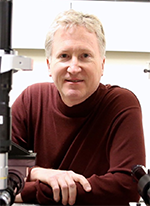 BIOGRAPHY: Kerry Vahala is the Jenkins Professor and Professor of Applied Physics at Caltech. He has pioneered nonlinear optics in high-Q optical micro resonators. His research group has launched many of the areas of study in this field and invented optical resonators that hold the record for highest optical Q on a semiconductor chip. Vahala has applied these devices to a wide range of nonlinear phenomena and applications. This includes the first demonstration of parametric oscillation and cascaded four-wave mixing in a micro cavity - the central regeneration mechanisms for frequency micro combs; electro-optical frequency division - used in the most stable commercial K-band oscillators; and the first observation of dynamic back action in cavity optomechanical systems. His micro-resonator devices are used at the National Institute of Standards and Technology (NIST) in chip-based optical clocks and frequency synthesizers. They have also been used at the Keck II observatory in Hawaii as miniature astrocombs in the search for exoplanets. Vahala's current research is focused on the application of high-Q optical micro resonators to miniature precision metrology systems as well as monolithic optical gyroscopes. Professor Vahala was involved in the early effort to develop quantum-well lasers for optical communications and received the IEEE Sarnoff Award for his research on quantum-well laser dynamics. He has also received an Alexander von Humboldt Award for his work on ultra-high-Q optical microcavities, a NASA achievement award for application of frequency combs to exoplanet detection and is a fellow of the IEEE, the IEEE Photonics Society and the Optical Society of America.
BIOGRAPHY: Kerry Vahala is the Jenkins Professor and Professor of Applied Physics at Caltech. He has pioneered nonlinear optics in high-Q optical micro resonators. His research group has launched many of the areas of study in this field and invented optical resonators that hold the record for highest optical Q on a semiconductor chip. Vahala has applied these devices to a wide range of nonlinear phenomena and applications. This includes the first demonstration of parametric oscillation and cascaded four-wave mixing in a micro cavity - the central regeneration mechanisms for frequency micro combs; electro-optical frequency division - used in the most stable commercial K-band oscillators; and the first observation of dynamic back action in cavity optomechanical systems. His micro-resonator devices are used at the National Institute of Standards and Technology (NIST) in chip-based optical clocks and frequency synthesizers. They have also been used at the Keck II observatory in Hawaii as miniature astrocombs in the search for exoplanets. Vahala's current research is focused on the application of high-Q optical micro resonators to miniature precision metrology systems as well as monolithic optical gyroscopes. Professor Vahala was involved in the early effort to develop quantum-well lasers for optical communications and received the IEEE Sarnoff Award for his research on quantum-well laser dynamics. He has also received an Alexander von Humboldt Award for his work on ultra-high-Q optical microcavities, a NASA achievement award for application of frequency combs to exoplanet detection and is a fellow of the IEEE, the IEEE Photonics Society and the Optical Society of America..............................................
Terahertz Frequency Topological Switches
Aaron Lindenberg
Stanford University, USA
Stanford University, USA
ABSTRACT: In this talk I will describe femtosecond-resolution crystallographic measurements probing dynamic switching responses driven by terahertz light pulses in topological Weyl semimetals, focusing on the 2D transition metal dichalcogenide WTe2. I will show that one can induce large amplitude interlayer shear oscillations with ~1% strain amplitudes, leading to a topologically distinct metastable phase not found under equilibrium conditions. Separate nonlinear optical measurements confirm that this transition is associated with a symmetry change and therefore corresponds to a transition to a topologically trivial phase. We further show that such shear strain serves as an ultrafast, energy-efficient means to induce more robust, well-separated Weyl points or to annihilate all Weyl points of opposite chirality. I will also discuss initial efforts investigating other means for manipulating the topological and ferroelectric phase diagram of this material through the application of pure electric fields and through doping/intercalation, showing a new low energy ferroelectric switching mechanism through interlayer gliding and the observation of controllable topological transport via a structural phase transition. This work defines new possibilities for ultrafast manipulation of the topological and ferroelectric properties of solids and for a topological switch operating at THz frequencies.
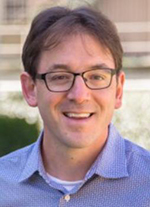 BIOGRAPHY: Aaron M. Lindenberg is an Associate Professor at Stanford University with joint appointments in the Department of Materials Science and Engineering and the Department of Photon Science. He received his B.A. from Columbia University in 1996 and his Ph.D. in Physics from the University of California, Berkeley in 2001. He was named a Faculty Fellow at Berkeley from 2001-2003 and then became a staff scientist at the SLAC National Accelerator Laboratory from 2003-2007. He is a winner of the DARPA Young Faculty Award, the Department of Energy Outstanding Mentor Award, the Alfred Moritz Michaelis Prize, and was named a Terman Fellow and a Chambers Faculty Scholar at Stanford and an I.I. Rabi Scholar at Columbia.
BIOGRAPHY: Aaron M. Lindenberg is an Associate Professor at Stanford University with joint appointments in the Department of Materials Science and Engineering and the Department of Photon Science. He received his B.A. from Columbia University in 1996 and his Ph.D. in Physics from the University of California, Berkeley in 2001. He was named a Faculty Fellow at Berkeley from 2001-2003 and then became a staff scientist at the SLAC National Accelerator Laboratory from 2003-2007. He is a winner of the DARPA Young Faculty Award, the Department of Energy Outstanding Mentor Award, the Alfred Moritz Michaelis Prize, and was named a Terman Fellow and a Chambers Faculty Scholar at Stanford and an I.I. Rabi Scholar at Columbia.

